Equipment and instrumentation

7T Cryo-Spectroscopy Suite
Built around a magneto-optical OptiCool® cryostat from Quantum Design™, our cryogenic spectroscopy suite allows multispectral characterization and imaging of optical materials and devices. Offering an automated cooldown and seamless temperature control through the range of 350 K to 1.7 K, the OptiCool® platform also has the low vibration and stability that is critical to optical measurements.
Recent publications obtained with this system:
- Datta, B. et al. Magnon-mediated exciton–exciton interaction in a van der Waals antiferromagnet, Nat. Mater. (2025). https://doi.org/10.1038/s41563-025-02183-0
- M. Li, et al., Experimental observation of topological Z2 exciton-polaritons in transition metal dichalcogenide monolayers, Nat. Commun. 12, 1-10 (2021).
Our setup features a 7-tesla split-conical magnet with field perpendicular to the table and large volume of field uniformity. Its 7 side windows allow for unprecedented optical access to a with customized windows for visible, near-IR, and mid-IR experiments.
The system is also equipped with an attocube™ nano-positioner system integrated with home-made sample holders enabling nanoscale precise alignment of quantum materials and quantum emitters in our photonic nanostructures for our optical experiments.
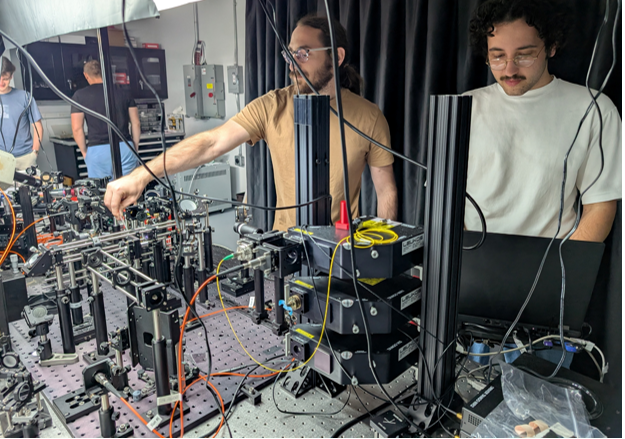
Visible and near-IR characterization suite
This custom-bult system allows broadband characterization of optical nanostructures, photonic and polaritonic metasurfaces, and photonic crystals via direct and back focal plane (Fourier plane) imaging. Based on a supercontinuum laser system with three acousto-optical filters, it allows reconstruction of photonic band structure and mode imaging in both far- and near-field regimes, with the latter one attained via solid immersion with high index Si, Ge, and ZnSe hemispheres.
Recent publications obtained with this system:
A. Vakulenko, et al., Adiabatic topological photonic interfaces, Nat. Commun. 14, 4629 (2023).
S. Kiriushechkina, et al., Spin-dependent properties of optical modes guided by adiabatic trapping potentials in photonic Dirac metasurfaces, Nat. Nanotech. 18, 875–881 (2023).
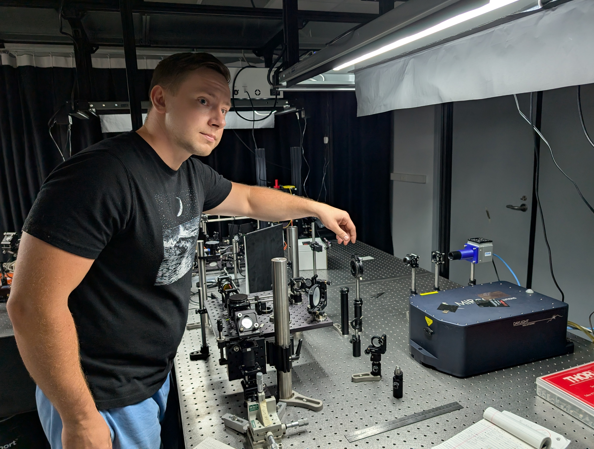
Mid-IR characterization suite
Built around tunable quantum cascade laser with four modules and mid-IR camera, this custom-bult system allows nearly continuous broadband (5μm -12μm) characterization of optical nanostructures, photonic and polaritonic metasurfaces, and photonic crystals in mid-IR via direct and back focal plane (Fourier plane) imaging. Precise tuning of the laser wavelength allows extraction of constant-frequency contours in the imaging Fourier plane, and a subsequent reconstruction of photonic band structure. The mid-IR photonics and polaritonic modes can also be imaged in the far-field.
Recent publications obtained with this system:
D. Smirnova, et al., Polaritonic states trapped by topological defects, Nat. Commun. 15, 6355 (2024).
K. Chen, et al., Photonic Dirac cavities with spatially varying mass term, Science Advances 9, eabq4243 (2023).
S. Guddala, et al., Topological phonon-polariton funneling in midinfrared metasurfaces, Science 374, 225-227 (2021).
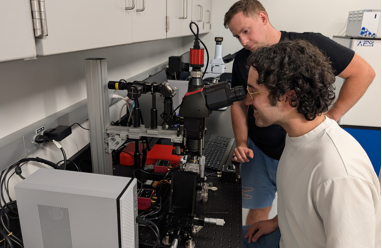
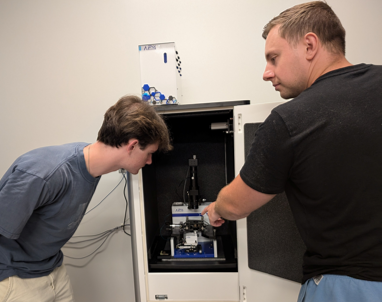
2D materials preparation, transfer, and characterization suite
This custom-built microscope integrating imaging, luminescence, and precise positioning enables precise exfoliation and transfer of 2D material onto prefabricated photonic nanostructures, localization of quantum emitters, and their alignment with optical hotspot for emissions control and coupling for the formation of polaritonic modes.
Defects for quantum emitters
Our laboratory has AFM which allow not only to precise characterize thickness of exfoliated flakes of 2D/vdW materials, but also to introduce defects via tapping and scratching. This technique allows us to produce quantum emitters on demand and at required locations to alight their position with hotspots of electric field in our nanostructures.
Recent publications obtained with this system:
D. Smirnova, et al., Polaritonic states trapped by topological defects, Nat. Commun. 15, 6355 (2024).
S. Guddala, et al., Topological phonon-polariton funneling in midinfrared metasurfaces, Science 374, 225-227 (2021).
M. Li, et al., Experimental observation of topological Z2 exciton-polaritons in transition metal dichalcogenide monolayers, Nat. Commun. 12, 1-10 (2021).
S. Guddala, et al., All-optical nonreciprocity due to valley polarization pumping in transition metal dichalcogenides, Nat. Commun. 12, 1-9 (2021).
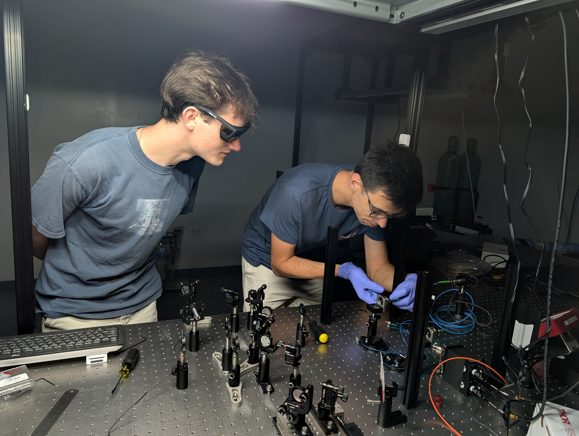
Quantum interference and single photon characterization
This custom-built system allows multiple configurations for the characterization of quantum states of light, including single photons and entangled photon pairs. With a simple adjustment, our structures with embedded single photon emitters can be tested for generation of single photons via antibunching. Similarly, nanostructures based on conventional and 2D/vdW materials can be tested for generation of entangled photon pairs via nonlinear processes (e.g., spontaneous parametric down conversion – SPDC) via either time-of-arrival or the Hong-Ou-Mandel experiments. Single photons detectors offer good quantum efficiency, and the computer controlled counting module and scanning stage allow automation of our experiments.
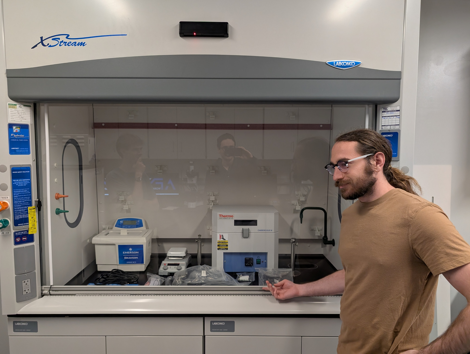
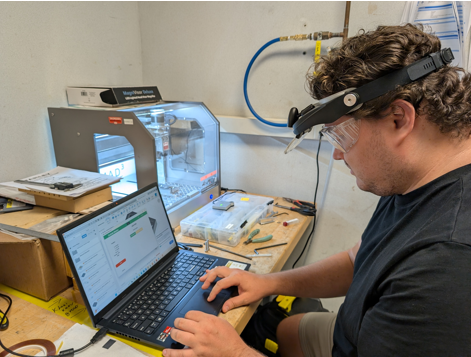
Auxiliary chemical and mechanical workshops
The Khanikaev’s lab is equipped with a fumehood, spinner, oven for annealing samples in various atmospheres, desiccator, refrigerator and storage units for common chemicals (resists, solvents, etc.) and materials we use in our research, including 2D crystals and their flakes, quantum dots, various nanostructures, etc.
Our group’s dedicated small machine shop allows precise machining and 3D printing of custom sample holders for our optical experiments, as well as fabrication of various customized mechanical components for the enhanced versatility of our experimental schemes.